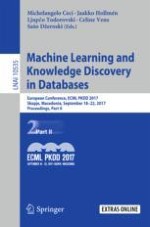2017 | OriginalPaper | Buchkapitel
Partial Device Fingerprints
verfasst von : Michael Ciere, Carlos Gañán, Michel van Eeten
Erschienen in: Machine Learning and Knowledge Discovery in Databases
Aktivieren Sie unsere intelligente Suche, um passende Fachinhalte oder Patente zu finden.
Wählen Sie Textabschnitte aus um mit Künstlicher Intelligenz passenden Patente zu finden. powered by
Markieren Sie Textabschnitte, um KI-gestützt weitere passende Inhalte zu finden. powered by
